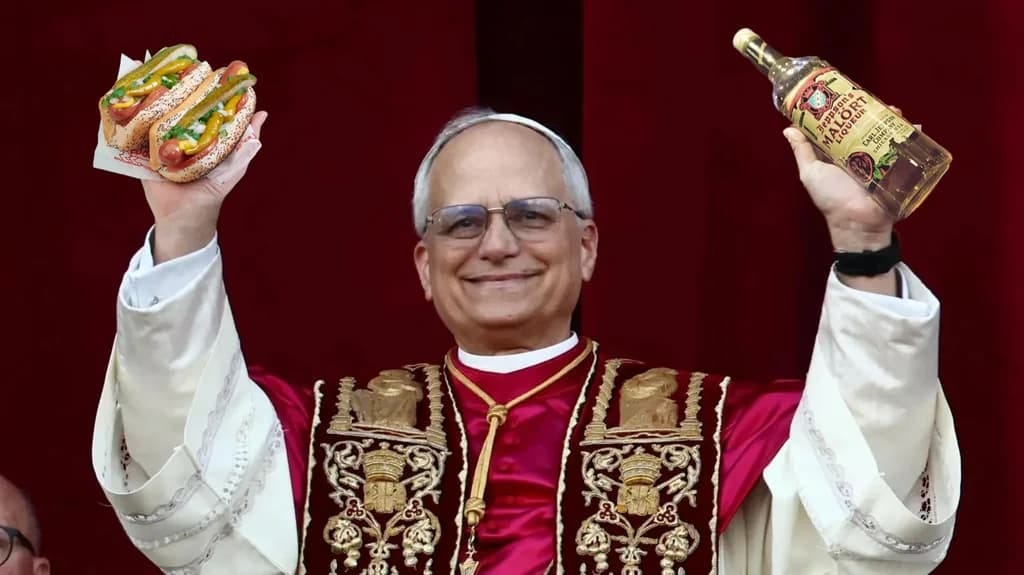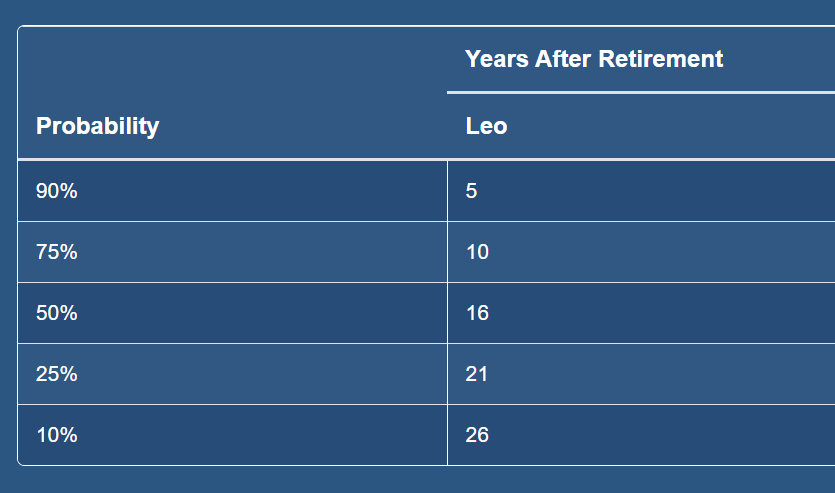Habemus Papam! On Pope Leo XIV and Retirement Planning
A Chicago Pope can only help....
I wasn’t expecting such a quick conclave, and yeah, Chicago has something up on New York now, gotta admit.
I don’t know much about the once-Cardinal Prevost, now Pope Leo, but I recommend going to The Pillar for such things (all links free):
8 May 2025: The American Pope
2 May 2025: Meet the conclave: Cardinal Robert Francis Prevost
There is also paid content, but I’m not linking that.
Perhaps a Pope from Chicago can provide extra prayers (and a miracle) for their abysmal finances, but then, the Vatican has its own financial problems to deal with. But that’s not what I want to write about today….
…I want to write about likely papal reign length! And its connection to retirement planning!
Papal Reign Estimation = Retirement Length Estimation
It’s not particularly crass to talk about this — in my prior post on papal turnover rates, many of the conclaves were explicitly about picking an old and/or sickly man in order to have a short papacy:
Geeking Out with Papal History: When Was Papal Turnover Most Frequent?
Pope Francis has been laid to rest, so let’s get to the papal politicking!
In some of those cases, the papal reign was extremely short, as in, under a month. They were perhaps not expecting quite such a rapid turnover.
Now, we’re in an age of relative stability, and longevity. Selecting a man of 80 years old may lead to a papacy of 10-20 years!
How to gauge the probabilities?
Other than the recent example of Pope Benedict, who resigned, in general we assume the pope will reign until death. This is akin to planning retirement - how long will one’s retirement be?
What’s great about this one is I don’t even have to build anything new!
Actuaries Longevity Illustrator
According to the updated pope list, Pope Leo XIV is age 69.65 years… I will simply round to 70 years old.
There are questions on smoking (I don’t think he smokes, so I will say no) and health condition (I will start out by saying “Average”).
Here are the results:
Results for Specific Number of Years
For a comparison, Pope Benedict died at age 95 (after resigning at age 85), and Pope Francis died at age 88.
Many men are living well into their 80s at this point. Pope Leo bids fair to live past age 85.
Results for Specific Survival Probabilities
For this base case, it looks like a papacy of at least 16 years is our median (the 50/50), but there is about a 25% chance of getting a papacy of 21+ years, and 10% chance of a papacy of 26+ years.
Nerdy Details
The mortality assumptions:
The projections shown in the ALI are based on 2019 mortality tables used by the Social Security Administration in the annual Trustees’ Report that was released in the June 2022. There are separate rates for males and females.
Because mortality rates show a long-standing trend of improving, the ALI is based on the assumption they will continue to improve according to the MP-2021 rates published by the Society of Actuaries in the fall of 2021. These improvement rates are applied to the 2019 Social Security mortality tables to project mortality rates to future years.
Additional adjustments are made for health status ranging from 75% to 150% depending on age and for smoker status ranging from 69% to 233% depending on age. The combined adjustment factors range from 52% to 349%, depending age, health status and smoking statuses.
This longevity illustrator does not assume that the relatively high mortality rates of 2021 and 2022 caused by COVID-19 will continue into the future.
I will give the results for Excellent health in a moment (I’m not going to bother with poor health, because that isn’t relevant for Pope Leo.)
One may question whether the U.S. mortality tables are relevant to Pope Leo, given he has been living in Peru and Rome for some time, but I’m not particularly worried about that. It’s close enough, for estimates.
Tables of Results for Excellent Health
Results for Specific Number of Years
Results for Specific Survival Probabilities
Planning for retirement: the difference between life expectancy, median, and survivorship
I never said anything about “life expectancy” in all of the above.
That’s because it’s irrelevant.
Life expectancy can be used as a mortality metric for populations, if you want to compare between them, or for a population over time to see how it’s changing, etc.
As an individual planning for retirement, you care about the possibilities and probabilities of living a certain amount of time. That’s what’s being shown in the tables above.
It’s good to start out with the median (the 50% survivorship mark), to give yourself a main target. However, you need to consider the possibility of living longer than the median.
In the case of Pope Leo, using the base assumptions, his median papal reign should be about 16 years.
However, there’s a 25% chance he’ll live 5 years longer than that - a 21-year papal reign.
And a 10% chance he’ll live 5 years longer than that - a 26-year papal reign.
That’s based on a series of assumptions, obviously.
There are different levels of planning, but one should make sure one covers planning the median case plus extra for that 25% situation, and then perhaps a longevity insurance-type to cover the “extreme” 10%.
It depends on your particular circumstances. But using life expectancy, especially using life expectancy from birth reported in the news - which has nothing to do with your expectations in retirement - will make you unprepared for what your situation will be.
Related posts and videos
15 March 2024: On Choosing a Retirement Age: For Individuals
15 March 2024: Video (with above) - YouTube: When to Retire? Actuaries Longevity Illustrator - One Person - 2024 Edition
29 Jun 2024: Video - YouTube: Planning for a Couple in Retirement: Actuaries Longevity Illustrator Demonstration
2 Jan 2024: What Are (and Were) the Chances of Living to 100?
7 Jul 2021: Mortality Basics with Meep: Median, Mode, and Mean Age at Death and Life Expectancy













You mean DA POPE, right? ;)
Okay, so I am really seeking out here. Peru death stats don't matter, since ex-pats from any country are too small to impact the results. For Italy - possibly the same argument could be made. But for Vatican City - this is where the true mortality risk lies. Those Pope's with short reigns often did not die of natural causes. (Reference: your former posts.) Do the statistics exist for Vatican City? If so, is the population large enough for the death rates to be statistically significantly different from Italy as a whole or Europe as a whole or... (there are loads of ex pats in Vatican City!) Are there statistics related to Catholic priests in toto? Do they live longer or shorter lives than the general populations they serve?